Fujifilm GFX 50 Megapixel Medium Format Announced: Hi-Res Display Wonder (EVF, Rear LCD, Top Panel)
See my Fujifilm GFX wish list.
See Hasselblad X1D coverage and Fujifilm GFX coverage.
Fujifilm GFX product spec PDF. Kinda baffling to justify low-res images in a PDF selling a MF camera.
It’s the most aggressive price yet for a medium format camera.
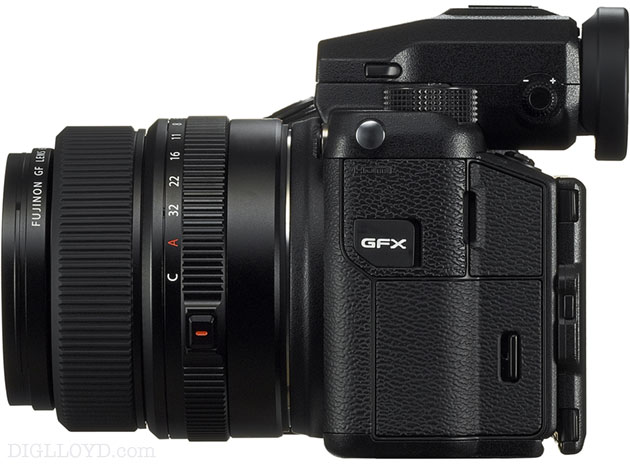
Consider the aggressive value proposition of the Fujifilm GFX, not just on the medium format market but also on the high-end 35mm full frame market!
To wit, Leica just today announced the M10 rangefinder with a 24MP full-frame sensor (much smaller sensor, less than half the megapixels), a rear LCD with 0.920 Mdots (vs 2.36 Mdots), the Leica low-res EVF is not included, and the Leica M10 body costs $200 more. The cameras are of course very different in all ways, but the bottom line is that the Leica is low-res all around—sensor, EVF, rear LCD.
The Fujifilm GFX uses the latest display technology, the Hasseblad X1D uses 2-year-old display technology. More on that below. So even if the X1D is more sleek and has a little better image quality, the high-res displays as key differentiators that relate both to practical usage and shooting and viewing pleasure.
- 51.4MP 43.8 x 32.9mm CMOS Sensor
- 2x SD card slot
- Removable 3.69m-Dot OLED EVF [high res EVF, among the best, INCLUDED with the camera body]
- 3.2" 2.36m-Dot Tilting Touchscreen LCD [high-res rear LCD ~Retina grade, superior to most cameras on the market (Nikon D5, D500 have also), the new Leica M10 has only a low-res 1.0 megapixels]
- The 1.28-inch monochrome LCD monitor at camera top can be viewed in all conditions (including bright sunlight) and displays information including shutter speed, aperture, ISO, exposure compensation and exposure mode. Customize up to 8 items to be displayed on the monitor, backlight for viewing in low light conditions.
- 117-Point Contrast-Detection AF System
- Shutter speeds 1 to 1/4000, time, bulb
- ISO 100-12800, extended output to ISO 102400
- Full HD 1080p Video Recording at 30 fps [why bother if no 4K?]
- Multi Aspect Ratio Shooting
- Film Simulation Modes
- Weather-Sealed Magnesium Alloy Body
High-res display wonder
For the Fujifilm GFX, I’m impressed that not just one but THREE high-res displays are included: the high-res OLED EVF, and the Retina-grade rear LCD plus an ultra-high-res monochrome display at camera top. I can’t think of any DSLR or mirrorless camera on the market today that offers such a high-res rear LCD, which should be gorgeous. The GFX rear LCD has about twice the dots of most DSLRs. The EVF resolution suggests superb quality and the top panel (programmable) is extremely useful (I use it all the time on my Nikon or Canon).
A high-res EVF is a very high priority for me (the primary and often *only* means of seeing the image I am going to make, hence a critical feature). The monochrome display is a huge plus in difficult lighting and/or if shooting from above the camera (remember the tiltable LCD!), vs having to view the rear LCD.
Setting aside the practical and useful shooting aspects of high-res displays (easier for critical focus for starters), the sheer pleasure of a high-res display that is wondrous fair to behold is worth a lot of enjoyment, the iPhone 7 Plus screen being that existence proof—imagine if it were half the resolution (1/4 the pixels)—the experience would hardly be the same. I always did like a 4X5 ground glass and the resulting 'chromes'. Enjoyment of images even while shooting them is a key satisfier for me.
The Fujifilm GFX has a 3.69 Mdot OLED EVF. The Hasselblad X1D has a 2.36 Mdot XGA Electronic Viewfinder—much lower resolution and not OLED either (OLED is better). The viewing experience is likely to feel like “good enough” vs “WOW”. Once you experience hi-res (Leica SL, Panasonic GH5), there is no going back. The crummy 3.0" 0.920 Mdot rear LCD on the X1D will look toy grade compared to the 3.2" 2.36 MDot rear LCD on the GFX.
Pricing:
Three of the six lenses will be available initially, the others to come later. To tilt the included EVF, the tilt adapter is required. Actual ship dates are unclear, but the word seems to be late February 2017. Lens prices are very modest for medium format, so I hope that does not mean compromised optical quality. However, the relatively slow lens speed may counterbalance that concern (easier to design at reasonable cost). "WR" means weather-resistant.
Great strategy of offering two lens adapters also.
- Fujifilm GFX camera body is about $6499
- Fujifilm EVF-TL1 EVF Tilt Adapter about $569 (allows the EVF to tilt).
- Fujifilm GF 32-64mm f/4 R LM WR about $2299
- Fujifilm GF 63mm f/2.8 R WR about $1499
- Fujifilm GF 120mm f/4 Macro R LM OIS WR about $2699
- Fujifilm NP-T125 Rechargeable Lithium-Ion Battery
- Fujifilm H Mount Adapter G about $659 (Designed to be used with the Super EBC Fujinon HC lenses for the GX645AF medium format film camera)
- Fujifilm View Camera Adapter G (Mount GFX 50S to 4 x 5" View Camera Body)
Shutter
Fujifilm apparently went to some trouble to do the shutter right. I don’t yet understand all these options or how to use them, but it looks to cover all the bases.
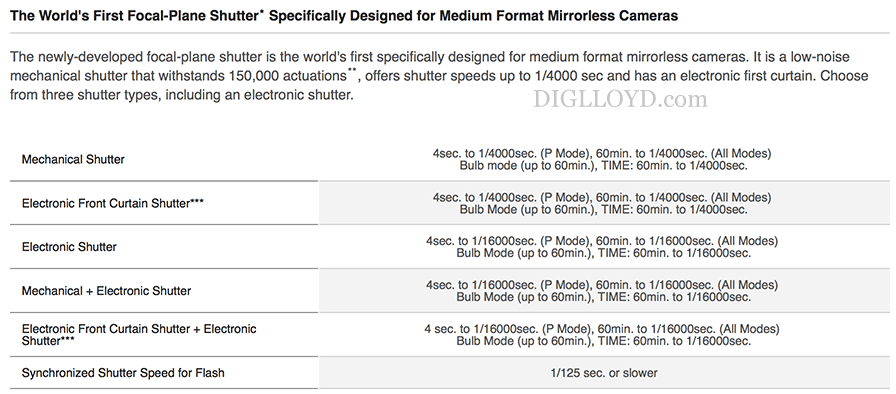
Multiply by 0.82 for equivalent horizontal focal length / field of view as compared to a 36x24mm sensor: 19mm, 26-52mm, 37mm, 52mm, 90mm, 98mm.
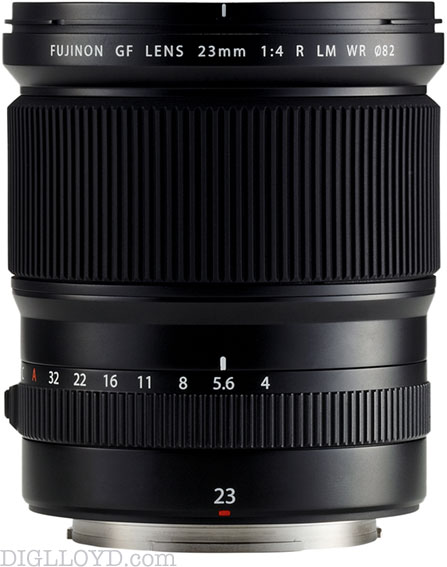


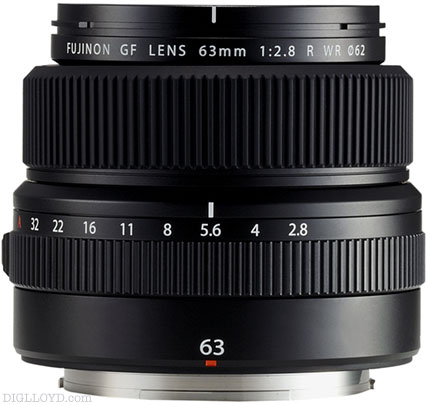
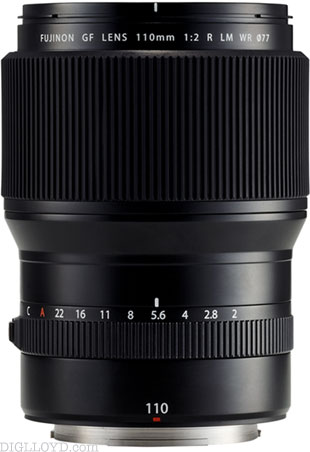

Selected highlights
The FUJIFILM GFX 50S features a 43.8 x 32.9mm CMOS medium format sensor: a product of Fujifilm's rich history, cutting-edge digital technology and extensive knowledge of medium format film cameras. Boasting an effective resolution of 51.4 million pixels and paired with high-performance GF lenses, the sensor delivers superior tones and sharpness that will impress professional photographers shooting in the world of commercial, fashion or landscapes.
The FUJIFILM GFX 50S uses piezoelectric elements to provide ultrasonic sensor cleaning. You can specify when to perform sensor cleaning: immediately, when the camera is turned on, or when the camera is turned off.
Both the shape of the light-gathering micro-lenses and the processing from the photodiodes have been optimized to achieve a high level of sharpness and broad dynamic range. The lowest native ISO sensitivity of 100 and the 14-stop dynamic range, achieved with 14-bit RAW data, delivers high definition images in a variety of conditions with notably rich skin tones and intricate foliage detail.
The FUJIFILM GFX 50S sports the X-Processor Pro image processing engine, capable of drawing the very best out of the 51.4 megapixel sensor. Its advanced processing accelerates and optimizes the camera's performance in a variety of areas including stunning color reproduction with Fujifilm's unique Film Simulation modes, in-camera RAW conversion to the 8-bit TIFF format, accurate contrast AF, quick startup time, and minimal shutter release time lag and shooting intervals between frames.
The FUJIFILM GFX 50S is supplied with a detachable 3.69M-dot EVF with 100% coverage and a viewfinder magnification of 0.85x. It uses five dedicated lens elements to achieve 100% coverage and offers a diopter adjustment range of -4m-1 to+2m-1. Attach the optional EVF Tilting Adapter EVF-TL1 between the camera body and the EVF to enable vertical tilt (0°-90° / 5 steps) and horizontal rotation (±45°). This allows you to shoot from waist level or aids shooting in portrait orientation. For more accurate focusing, push or rotate the Rear Command Dial to enlarge Live View images between 1x and 16.7x
Large Rear Touchscreen LCD Tilts in Three Directions — The rear 2.36M-dot LCD monitor measures 3.2 inches and offers 100% coverage. The smart touchscreen panel enables intuitive operation and tilts in three directions (90° up, 45° down and 60° to the right) for easy framing and shooting from high or low angles.
The 1.28-inch monochrome LCD monitor can be viewed in all conditions (including bright sunlight) and displays information including shutter speed, aperture, ISO, exposure compensation and exposure mode. You can customize up to eight items to be displayed on the monitor; it also has a backlight for viewing in low light conditions.
The FUJIFILM GFX 50S features 10 customizable Fn buttons. Different options can also be asigned to Short Cut Q (Quick) menu items. Frequently used settings can be registered in My Menu while Custom Registration allows you to save and rename Film Simulation and image quality settings.
This electronic level uses a 3D system and is highly effective for architecture or landscape photography, when the accuracy of horizontal and vertical lines is crucial.
The FUJIFILM GFX 50S can display four types of histograms: RGB and brightness, each with or without highlight warnings. [DIGLOYD: disappointing, on true raw histogram].
The FUJIFILM GFX 50S uses the G Mount, which has a mount diameter of 65mm, flange back distance of 26.7mm and minimum back focus distance of 16.7mm. It uses as many as 12 electronic contact points for sending and receiving data, plus it supports the use of a wide variety of lenses and accessories. The short back focus distance, made possible because of the Fujifilm mirrorless system's structure, affords greater freedom in lens design to contribute to the development of fast, compact and high-performance GF lenses while preventing vignetting to deliver edge-to-edge sharpness.
The FUJIFILM GFX 50S saves pictures in a variety of formats and quality, including two sizes and three compression levels of JPEGs, as well as compressed/uncompressed RAW. Even when you are shooting only in RAW, the camera records 12-megapixel thumbnails at the same time. Its in-camera RAW conversion function also enables RAW files processing with the ability to save them as 8-bit TIFFs.
The standard ISO sensitivity range is ISO100-12800, with extended sensitivities of ISO50, ISO25600, ISO51200 and ISO102400 also available. RAW format is supported at all these ISO settings. The AUTO function allows you to set the standard ISO, low shutter speed limit and upper ISO limit, and configure AUTO 1 - 3 settings according to shooting conditions.
The body is made from robust magnesium alloy, which feels both solid and durable in the hand. The body is weather-sealed in 58 points to achieve a high level of resistance to dust and moisture.The GFX 50S is compact and lightweight despite the large size of its sensor, plus its dust and weather-resistant body means it's equally effective in the studio or out in the field. Both slots support high-speed UHS-II cards.
The newly-developed focal-plane shutter is the world's first specifically designed for medium format mirrorless cameras. It is a low-noise mechanical shutter that withstands 150,000 actuations**, offers shutter speeds up to 1/4000 sec and has an electronic first curtain. Choose from three shutter types, including an electronic shutter.
The vertical battery grip VG-GFX1 provides a solid grip while also maintaining the camera's optical axis during vertical shooting. The grip features a Shutter Release Button, Command Dial, Focus Lever and six Fn buttons, mirroring the layout of the camera body. It holds an extra battery to enable shooting for extended periods of time and can be used to charge the battery. Using the AC adapter supplied (AC-15V), you can fully charge a battery in approx. two hours.
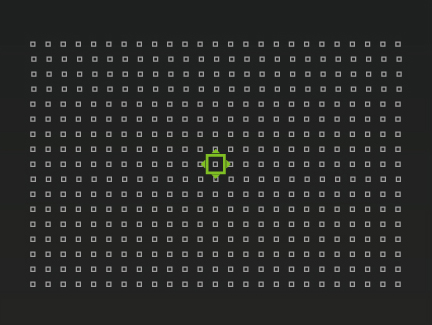 Focus Point Coverage
Focus Point Coverage9x13 (117 Points) / 17x25 (425 Points) Single Focus Points and Six Sizes of Focus Area — TTL Contrast AF is available in Single Point, Zone and Wide/Tracking modes. In the Single Point mode, the camera offers 9x13 (117 points) or 17x25 (425 points) and six different Focus Area sizes. Select the minimum size for pinpoint focusing. The camera automatically detects and focuses on a face or eyes. Priority can be given to either the right or left eye.
The combination of settings on the Shutter Speed Dial, ISO Dial and Aperture Ring allow you to switch between four different exposure modes: Aperture Priority AE (A), Shutter Speed Priority AE (S), Program AE (P) and Manual. As dials are used for main exposure settings, you can adjust settings even when the camera is turned off. The Command Position (C/T) also enables Command Dial operations. [DIGLLOYD Hooray! No moron modes].
In continuous shooting mode, the FUJIFILM GFX 50S can shoot at up to 3.0 fps until the memory card fills up in JPEG, up to 8 frames in RAW, and up to 13 frames in compressed RAW.
Sample unique shooting styles including fixed-point photography, time lapse and self-timer images with controls over shooting interval, total number of frames and shutter delay. You can set an interval between 1 sec - 24 hours for shooting 1 - infinity frames.
The FUJIFILM GFX 50S allows you to take two frames and combine them for a creative effect. The first shot is displayed on the LCD monitor, so you can easily compose and shoot the second frame.
The Self Timer function can be set at 2 sec or 10 sec. It is particularly useful for situations when you want to minimize camera shake, such as long exposures. [DIGLLOYD: brain dead like most vendors: just let me dial in what I want]
Record your voice for up to 30 seconds to make notes about the images you are shooting. This makes it easy to keep track of shooting data in situations where writing notes is impractical.


























